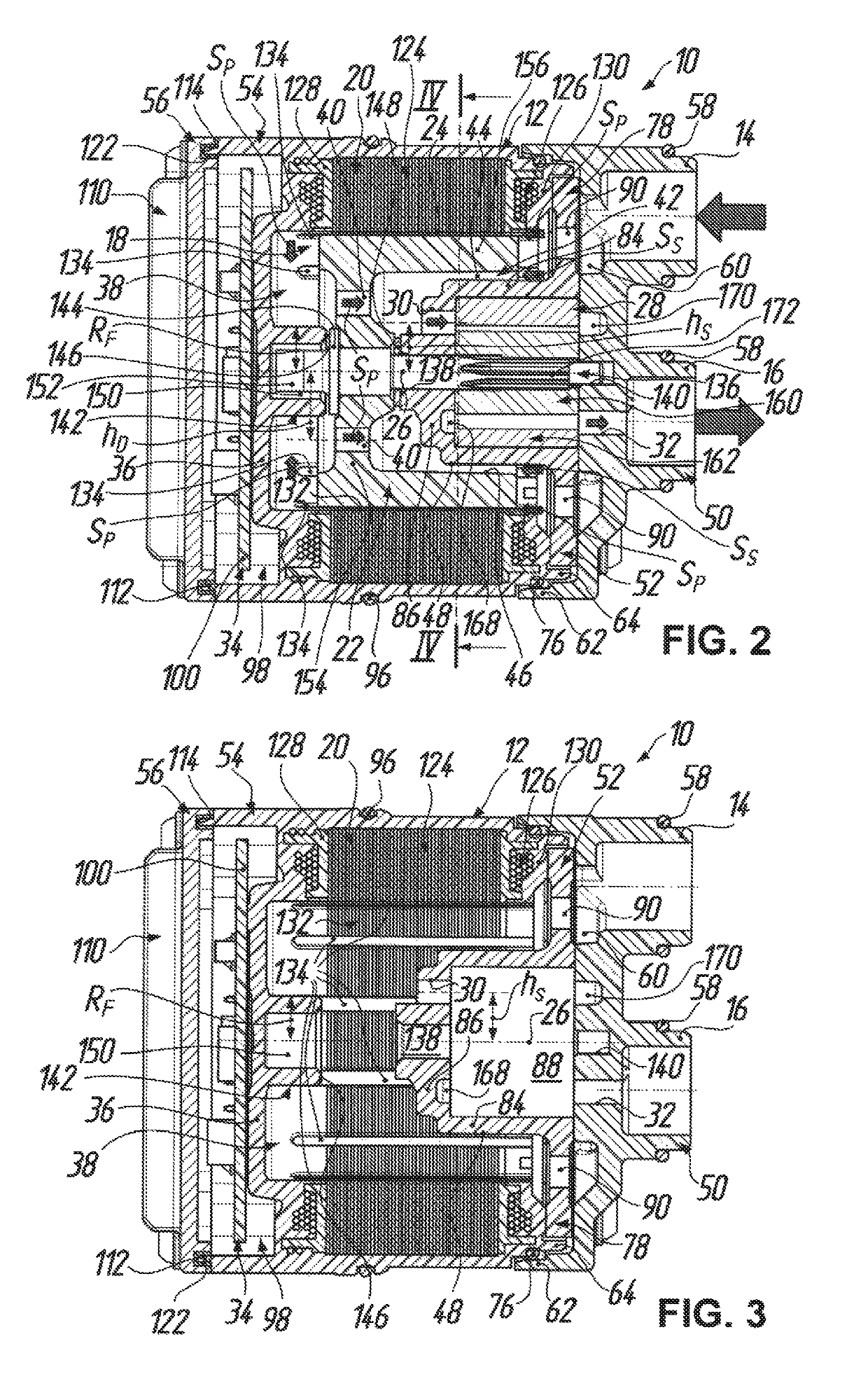Electric-motor-driven liquid pump
a technology of electric motors and liquid pumps, which is applied in the direction of liquid fuel engines, electrical apparatus, dynamo-electric machines, etc., can solve the problems of limiting the use of such a pump in small spaces, the need to ensure reliable pump operation, and the inability to adequately dissipate heat generated by electronic power units, so as to achieve the effect of low production costs
- Summary
- Abstract
- Description
- Claims
- Application Information
AI Technical Summary
Benefits of technology
Problems solved by technology
Method used
Image
Examples
Embodiment Construction
[0032]In the figures the reference numeral 10 denotes generally an electric-motor-driven liquid pump which can be used in or at a transmission for motor vehicles, particularly as an oil pump for cooling and / or lubricating purposes. The liquid pump 10 has a housing which is denoted generally by 12 and which has a suction connection 14 and a pressure connection 16. As FIG. 2, in particular shows an electric motor 18 is arranged in the housing 12 and includes a stator 20 at the housing and an internal rotor 22. The rotor 22 is received within the stator 20 so as to leave an annular gap 24 and is rotationally drivable about an axis 26 of rotation. A conveying device which is denoted generally by 28 in FIGS. 2 and 4 and which has a suction inlet 30 in fluid connection with the suction connection 14 of the housing 12 and a pressure outlet 32 in fluid connection with the pressure connection 16 of the housing 12 is drivably connected with the rotor 22 of the electric motor 18. In addition, ...
PUM
 Login to View More
Login to View More Abstract
Description
Claims
Application Information
 Login to View More
Login to View More - R&D
- Intellectual Property
- Life Sciences
- Materials
- Tech Scout
- Unparalleled Data Quality
- Higher Quality Content
- 60% Fewer Hallucinations
Browse by: Latest US Patents, China's latest patents, Technical Efficacy Thesaurus, Application Domain, Technology Topic, Popular Technical Reports.
© 2025 PatSnap. All rights reserved.Legal|Privacy policy|Modern Slavery Act Transparency Statement|Sitemap|About US| Contact US: help@patsnap.com



